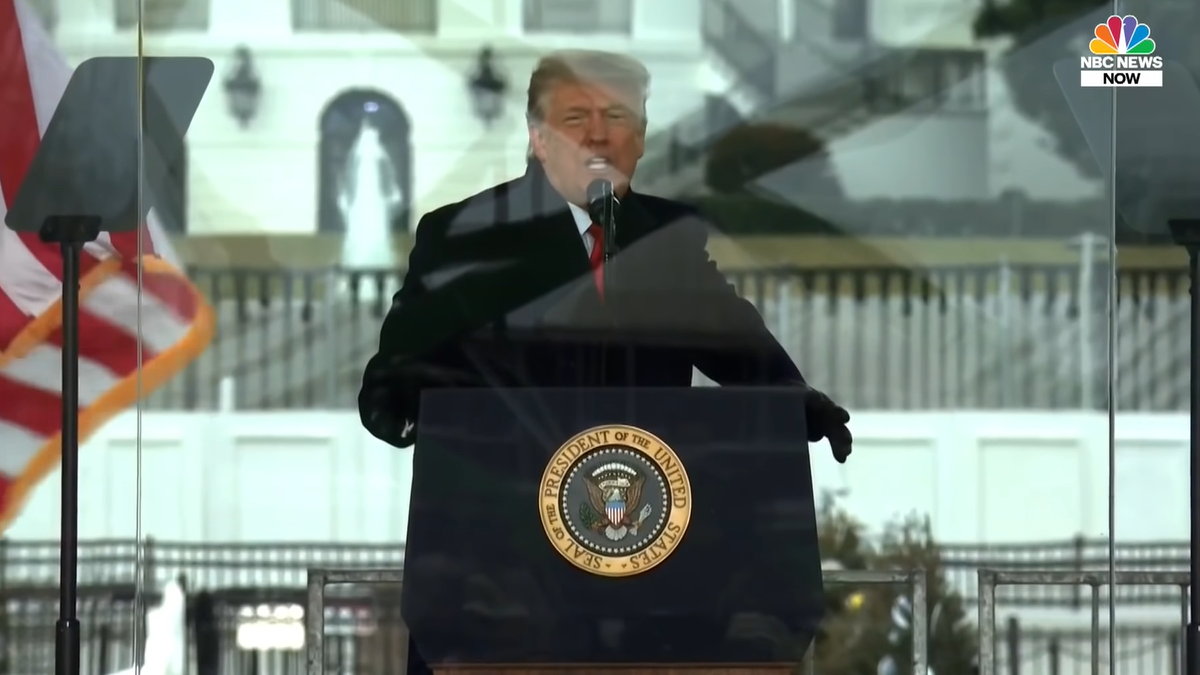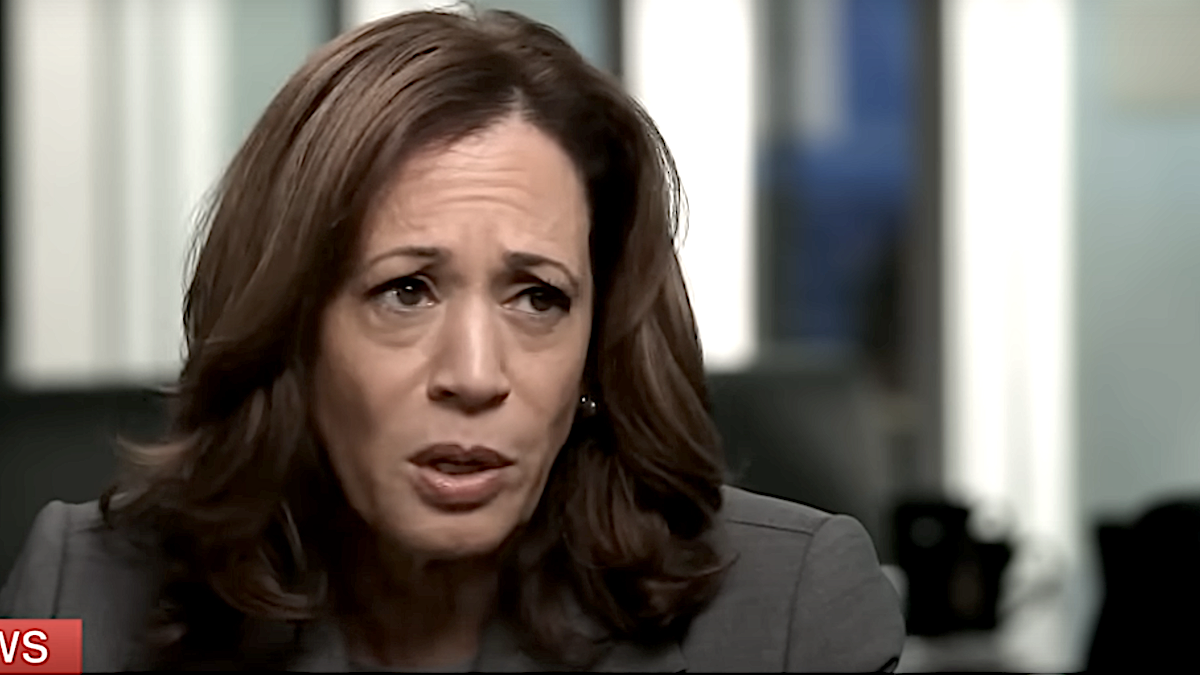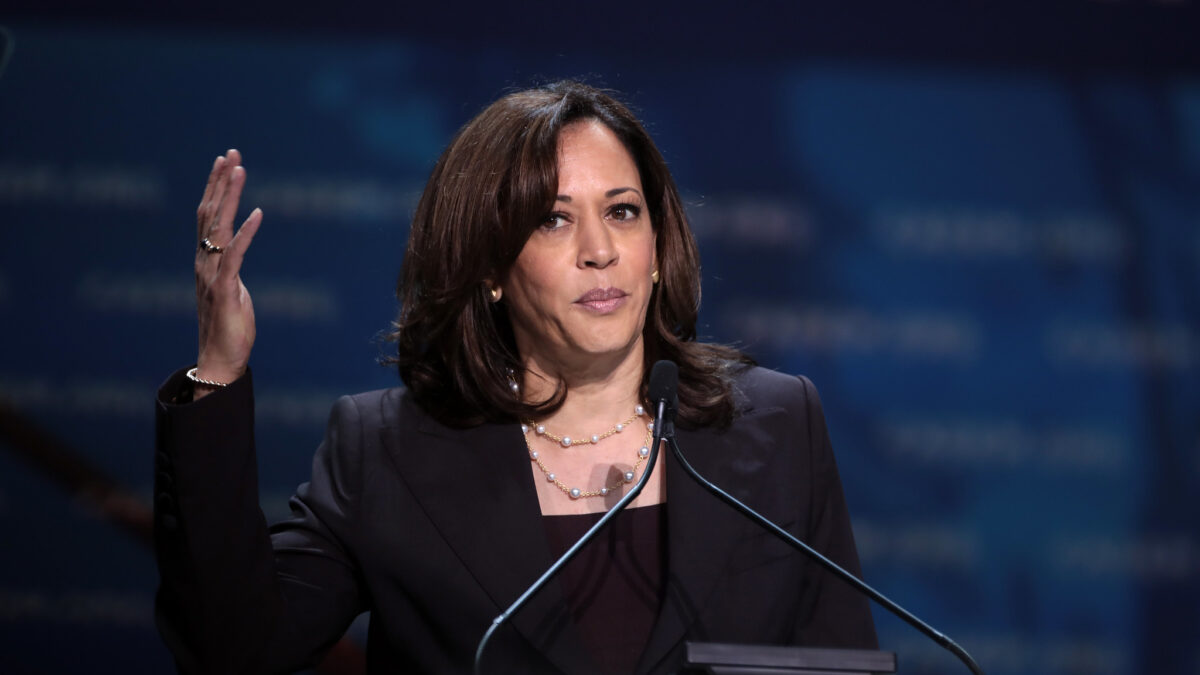After spending a year justifying brazen acts of routine political violence, Democrats relished the opportunity to scapegoat Republicans into being complicit in the same. Only Republicans aren’t: the riot at the Capitol remains roundly condemned, and Democrats invented a new conspiracy theory to claim otherwise.
House Speaker Nancy Pelosi’s first step to adopt Jan. 6 as a new national holiday on the same pedestal as 9/11 began with a snap impeachment of an outgoing president for “incitement of insurrection.” Then-President Donald Trump, the story goes, corralled his supporters in Washington, inflamed the mob, and ordered them to overthrow Congress in an attempted coup.
“The president of the United States summoned this mob, assembled the mob, and lit the flame of this attack,” said Wyoming Republican lawmaker Liz Cheney in a statement announcing her intent to impeach. “Everything that followed was his doing.”
Cheney, whose crusade to recruit House Republicans in favor of impeachment only drew at most nine members, conveniently omitted that the assault on the Capitol started before Trump had finished a speech wherein the president explicitly demanded supporters protest “peacefully.” It wouldn’t be the last time the Wyoming representative would make up her own timeline.
Democrats pushed onward with their proceedings using fabricated evidence made up by The New York Times that a Capitol police officer was killed in the turmoil by way of a fire extinguisher. The reporting used to label the riot “deadly” beyond the police killing of Ashli Babbitt and mysterious death of Rosanne Boyland was later stealthily corrected a week after the trial’s conclusion. The officer, Brian Sicknick, died of natural causes, according to the Washington D.C. chief medical examiner in April.
Trump was ultimately acquitted in February, but the hoax went on. House Democrats immediately demanded a 9/11-style commission to probe the riot at the focus of a month-long impeachment. After refusing to probe legitimate acts of political violence beyond the Jan. 6 Capitol riot, including the shooting of Republicans at a congressional baseball practice or the Good Friday attack this year, GOP lawmakers blocked its creation.
Republicans rightfully saw what it was: the 2021 version of 2017’s special counsel probe run by Robert Mueller, and another excuse to use the weapons of law enforcement against Democrats’ political enemies. After the two-year investigation run by a team of Democrats with unlimited resources, Mueller’s team found not one person, let alone Trump himself, had colluded with the Russian government to capture the pinnacle of power.
By the fall, Democrats launched their first impeachment anyway over another made-up scandal emanating from a temporary hold on Ukrainian military aid. Trump, they said, withheld nearly $400 million in aid in exchange for a foreign government’s investigation into the family of political opponents. By 2020, Trump stood acquitted.
While not established as a chartered commission, Mueller 3.0 arrived by mid-summer in the form of a Select Committee with members hand-picked by Pelosi, who took what she admitted to be an “unprecedented” move of barring Republican appointments. Pelosi denied participation to GOP Indiana Congressman Jim Banks, appointed by House Minority Leader Kevin McCarthy, as ranking member, alongside Ohio Rep. Jim Jordan. Under Pelosi’s orders, Reps. Adam Kinzinger, R-Ill., and Cheney, who was tapped to serve as vice chair, filled their place.
While at the dead commission’s inception Democrats revealed no interest in a broad examination of political violence in D.C., the committee’s work over its six-month lifespan has revealed even less interest in the riot at the Capitol. Instead, the committee has followed through on its central purpose of seeking retribution against political dissidents while offering a smokescreen to Pelosi’s own culpability in the Jan. 6 riot over her failure to reinforce Capitol security. The committee’s chairman, Bennie Thompson, D-Miss., admitted to CNN last summer the probe had no interest in the speaker’s negligence.
“If you look at the charge that we have in the resolution, it says the facts and circumstances around January 6. I don’t see the speaker being part and parcel to that,” Thompson said.
With more than 100 subpoenas issued by Pelosi’s deputies, their authority which to do so remains questionable, a vast majority have targeted individuals with no connection to the Capitol turmoil. Instead, the committee has sought to review telecom records of private individuals, including many for their mere association with a constitutionally protected same-day White House protest.
The committee’s performative outrage came on display at its first hearing wherein members offered tears and condolences to Capitol police officers while represented by activist attorneys from the Democrats’ past routine hoaxes. There were no tears from the same lawmakers in the prior year’s Summer of Violence that resulted in “some 15 times more injured police officers, 23 times as many arrests, and estimated damages in dollar terms up to 1,300 times more costly than those of the Capitol riot.”
Members on the committee now prosecuting those who dared question the validity of election results also possess their own history of objecting to electoral certification. Rep. Jamie Raskin of Maryland objected to Trump’s electoral certification in 2017, and Pelosi did the same of George W. Bush in 2004.
The committee’s grand revelations, meanwhile, have so far only reinforced the image of a White House more concerned about maintaining security and public peace than Speaker Pelosi. In December, the probe released a trove of documents obtained through a subpoena of former Trump White House Chief of Staff Mark Meadows
“Mr. Meadows sent an email to an individual about the events on January 6 and said that the National Guard would be present to ‘protect pro Trump people’ and that many more would be available on standby,” the Select Committee wrote. This was conveyed by its members and a complicit press as an unearthed scandal.
The probe went on last month to fabricate text messages again, and again, and Cheney invented her own timeline to indict Trump as waiting “187 minutes” to do anything about the riot 2 miles down the road.
“The violence was evident to all — it was covered in real time by almost every news channel,” Cheney said. “But, for 187 minutes, President Trump refused to act when action by our president was required, indeed essential, and compelled by his oath to our Constitution.”
Except an honest examination of the day’s timeline revealed Trump’s first statement came within 25 minutes of the first building breached, far from a president who relished the chaos.









